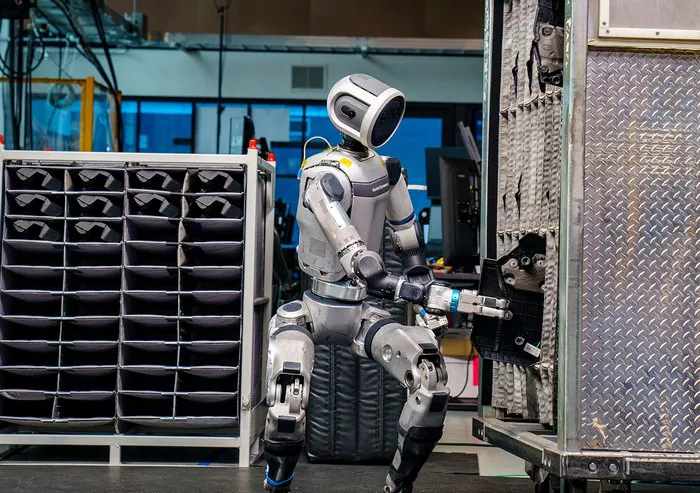Boston Dynamics, a leading manufacturer of automation machinery, has introduced a cutting-edge vision system for its humanoid robot, Atlas. The newly integrated system, developed by the company’s perception team, gives Atlas enhanced spatial awareness, object pose estimation, and real-time calibration—significantly boosting its autonomous capabilities.
Enhanced 2D and 3D Awareness
The system equips Atlas with both 2D and 3D perception, allowing the robot to better understand and navigate its environment. The 2D component helps Atlas identify objects, obstacles, and hazards with precision. For instance, it can now detect shelving units—commonly used to store automotive parts of various shapes and sizes—and accurately label keypoints to localize individual slots.
In tandem, the 3D awareness module includes a keypoint-based fixture localization system. This calculates Atlas’s position and orientation relative to nearby objects. By recognizing both internal and external keypoints of fixtures, the robot can adapt to dynamic environments, maintaining accuracy even when conditions change unexpectedly.
Object Pose Estimation and Calibration
Atlas’s object manipulation abilities have also been upgraded through enhanced pose estimation. The robot combines vision input, motion tracking, and tactile feedback to determine the exact location of objects as well as its own grippers. When grasping an item, Atlas continuously tracks the object’s expected position, ensuring stable and controlled movement during tasks.
Crucially, the system also supports real-time calibration. This function maintains alignment between the robot’s internal models and its actual physical environment—even when facing shifts caused by temperature changes or minor impacts.
A Shift Toward “Athletic Intelligence”
Looking ahead, Boston Dynamics indicated a strategic shift in development goals. While spatial artificial intelligence remains foundational, the company aims to evolve Atlas toward “athletic intelligence”—a concept that emphasizes agility, balance, and fluid physical coordination.
This latest upgrade marks a significant step in Atlas’s evolution from an experimental robot to a practical, adaptable machine capable of operating in complex real-world settings.
Related topics:

